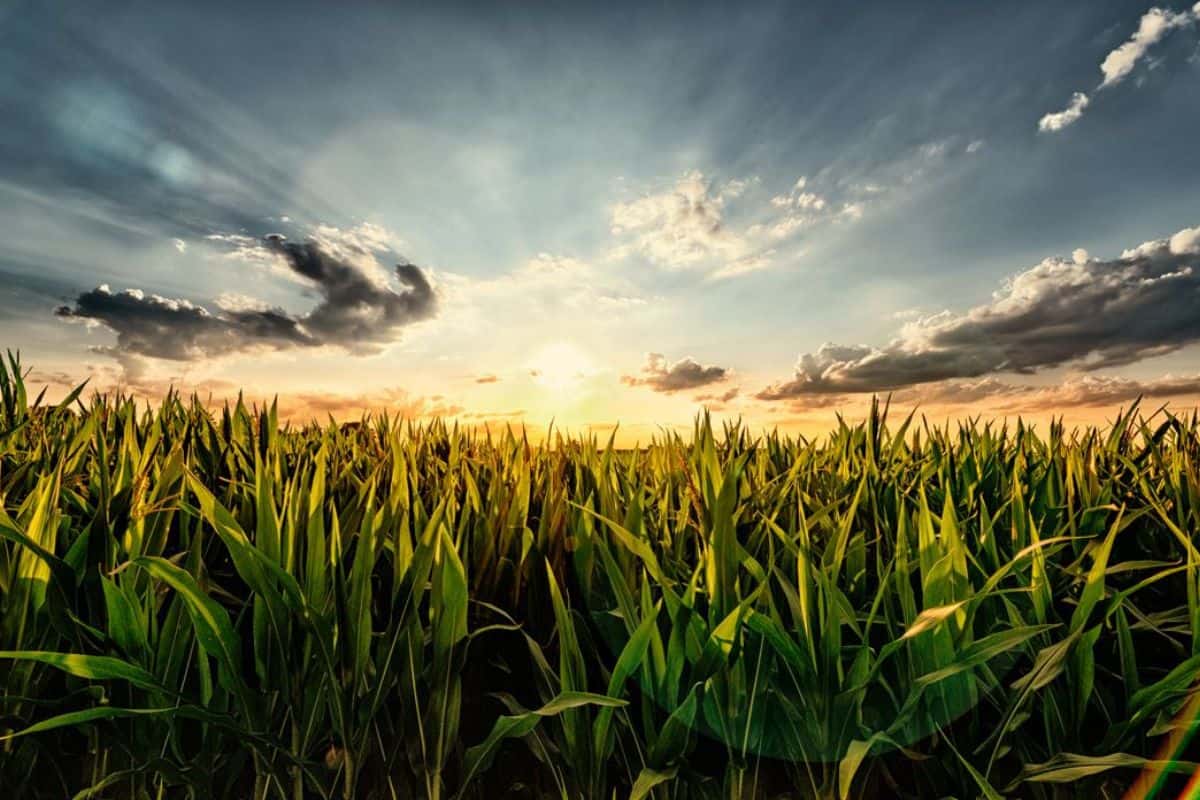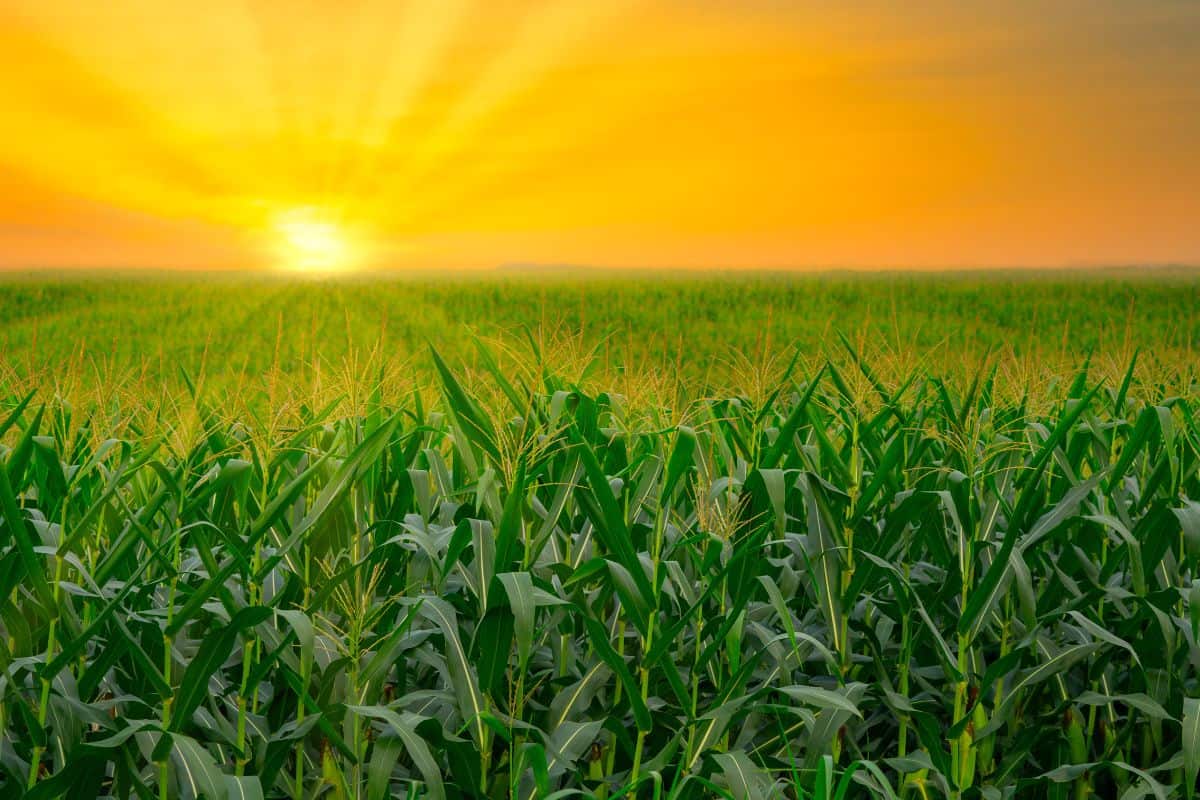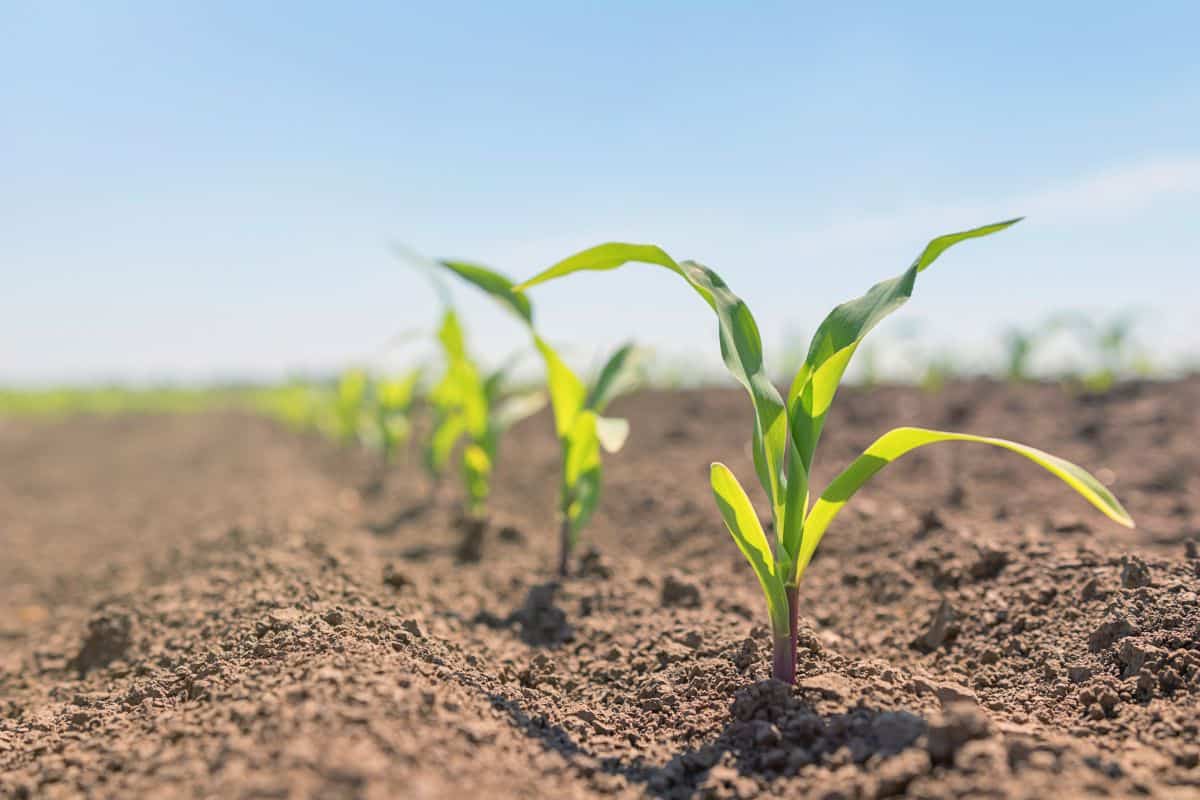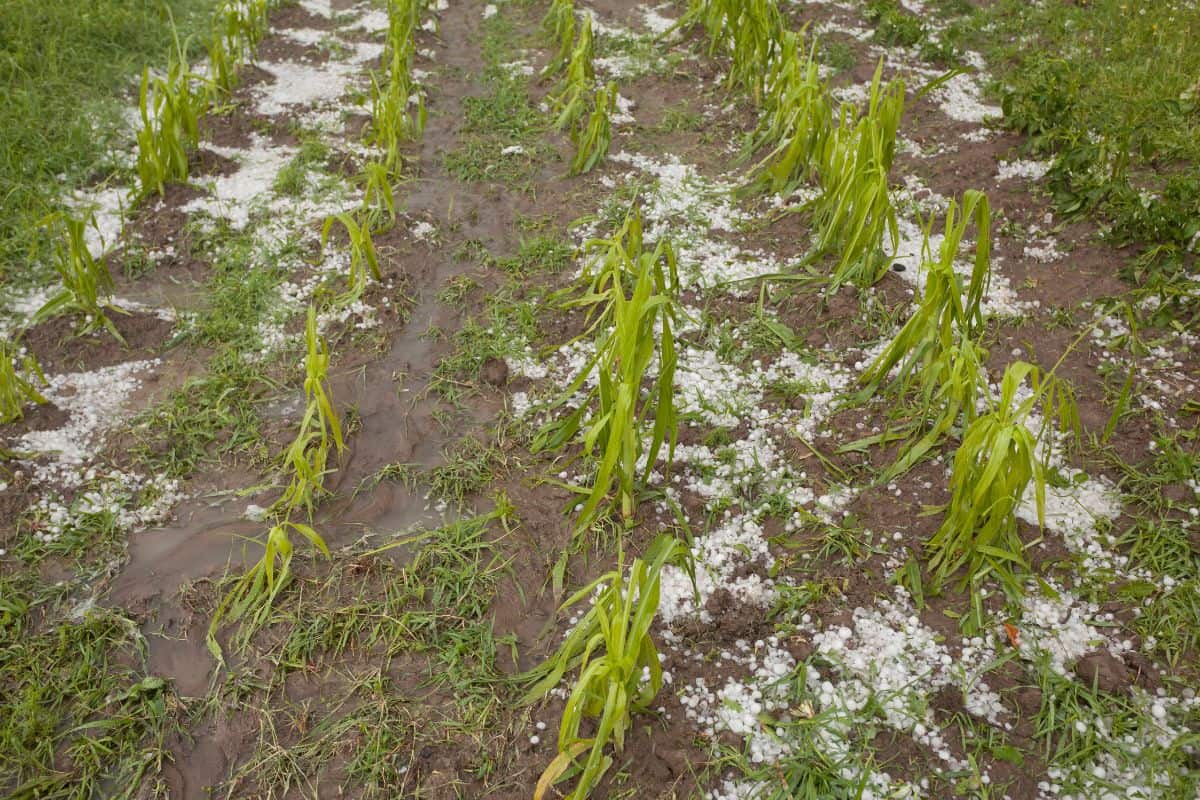Growing vegetables from home can be an exciting experience. However, if you don't plant your crops in the right conditions, they may not be successful in your garden. For example, do you want to grow corn but don't know how much sun it needs? Does corn usually prefer total sun exposure?
We will answer this question and many others throughout this article!
Corn generally needs six to eight hours of unfiltered sunlight daily. So, your crops will require full sun most of the time to grow properly and produce a usable yield.
Without enough sunlight, corn will not bloom and grow large cobs. Therefore, if you want corn you can eat and enjoy, plant it somewhere with plenty of direct sunlight.
As we begin this post, we will cover all things growing corn and discuss how much sun your crops need. Whether you're living in a cloudy region, haven't grown vegetables, or have other related questions, we're here to offer some guidance. With that said, let's get right into this topic below!
![sunrise over the corn field. - Does Corn Need Full Sun To Grow? [Can It Grow In The Shade?]](https://gardentabs.com/wp-content/uploads/2022/11/sunrise-over-the-corn-field.-Does-Corn-Need-Full-Sun-To-Grow-Can-It-Grow-In-The-Shade.png)
How Much Sun Does Corn Need Daily?

You want to plant corn somewhere that gets between six and eight hours of sun daily. Corn typically does better in the full afternoon and morning light, which can help it bloom better.
Furthermore, if your corn is in a more moderate region, it could require closer to ten hours of daily sun exposure each day. Again, this will vary by the plant, so all corn is different: but they all love sunlight.
According to farming experts, if corn gets less than six hours of daily sunlight, expect lower-quality yields. So, if you're farming for yourself or selling corn, you need to give your crops sufficient sunlight.
This goes for most vegetables, so don't try and grow your crops in overly shaded areas.
Can I Grow Corn In Partial Shade?
Although your garden may have space for corn, you shouldn't plant this crop if there's too much shade. As we said, corn requires around eight hours of daily sun exposure to bloom and be healthy.
Therefore, partial shade may result in your crops only seeing direct sun contact for six or fewer hours. Corn loves the warm, bright sun.
If your vegetable doesn't get enough nutrients from direct sunlight, it won't grow healthy or produce usable yields. For any farmers, that can devastate their annual salary/harvest.
So, unless your land gets full sun throughout the year, we wouldn't recommend planting corn. There's no such thing as "too much" sun when it comes to growing and harvesting corn.
Can Too Much Direct Sunlight Harm Corn?

Although corn generally loves sunshine, there are some situations where too strong of exposure can become a problem. For example, if your corn is in the full sun and the temperatures are above 95-100 degrees Fahrenheit, your crops can become dehydrated.
According to Pioneer Seeds, this is called 'Heat Stress' and can kill your vegetables. Luckily, if your corn gets plenty of water and the weather isn't like this for months, everything should be ok.
However, if the sun stays strong and the temperatures remain severe, your plant can start to become burned. This may begin if your corn cannot transpire water rapidly enough to cool heat-stressed leaf tissue.
From there, sections of your corn will start to die, eventually killing the crop altogether. So, give your corn some extra water if the forecast calls for high heat!
What Is The Best Temperature For Growing Corn?
Corn generally does best in climates that stay between 85 and 90 degrees. Of course, this will likely occur during the late spring and summer, but your corn likes to be warm rather than cold.
As we said above, higher temperatures can damage corn crops, but this won't happen overnight. According to experts, super cold conditions at the beginning of your corn's life can put unnecessary stress on it.
This may cause your vegetables to stop growing, fail to germinate, or even die. So, although triple-digit weather isn't always ideal, warmer conditions are usually best for growing corn.
Moreover, corn is more susceptible to old stress during imbibition, so keep that in mind.
When Is The Best Time To Plant Corn?

The best time to plant your corn is in the spring. Usually, you want to do this between late April and early May. Again, this can vary depending on your region's weather, so everyone is different.
As we covered, corn doesn't handle freezing conditions well. So, it would help if you waited until the last winter frost, when the ground is a bit warmer, to plant corn crops.
Even though it's exciting to grow your plant, rushing this timeline can harm your corn.
According to the University of Minnesota, if spring comes early, a mid-April planting date produces a similar yield if a freeze does not damage young plants in May.
Therefore, you may be able to speed up this process: but it's up to mother nature.
Where Does Corn Typically Grow?
Although you can usually find corn growing throughout the United States, it's mainly concentrated in the Great Plains through Ohio.
Typically, most corn comes from either Iowa or Illinois, as one-third of the country's total corn will be grown in these two states.
If you want to get technical, corn will grow from 58° N latitude in Canada and Russia to 40° S latitude in South America. Again, corn is a major crop, so it grows almost everywhere.
Regarding ideal weather conditions for corn, as long as the winters aren't long, you should be able to plant, grow, and harvest your corn successfully.
As we mentioned before, corn prefers warm weather and plenty of sunlight.
How Fast Does Corn Grow?
Corn grows incredibly fast. Generally, you can expect your corn to take 2-3 months from planting it to be ready for harvest. The speed of your corn's growth can also depend on its variety.
Some types of corn are faster to mature than others, so this is different for everyone.
On top of that, the packet on your corn seeds will give a rough estimate for the growing speed/timeframe, so make sure and check that out beforehand.
Ground conditions also significantly impact how fast and successfully your corn grows. For example, corn in a shadier location will not grow nearly as quickly as crops with full, direct sunlight, so that's something to note.
Also, your corn may take longer to grow and harvest if the weather stays colder through the spring.
Will My Corn Bloom In The First Year?
Yes! Since corn is fast-growing, you can expect it to be ready for harvesting within a few months. Corn will generally bloom after around a month or two, although this can vary.
According to Iowa State University, corn may take three weeks to emerge if the soil temperature averages between 50 to 55 F (10-12.8 C) at the time of planting.
From there, it will take a few months to grow and be ready for harvesting.
On the other hand, If the ground temperatures stay closer to 60 degrees, you may see sprouting after only ten or 12 days. So again, the key to fast-growing/blooming corn is warm ground conditions.
Furthermore, one farmer adds that their corn crops only bloom every eight or so years, so an aging crop can be less productive in terms of blooming.
Can Corn Survive Freezing Temperatures?

When it comes to surviving freezing weather, this can be hit or miss with corn plants. Typically, corn can handle temperatures between 32 and 28 degrees without issue.
That said, corn doesn't respond well to prolonged freezing or temperatures below 28 degrees Fahrenheit. On top of that, the soil will be around the same temperature as the air outside.
So, freezing weather may negatively impact corn from above and underground.
However, corn generally survives the occasional frosting, as the effects are usually limited to above-ground plant parts. So, don't panic yet if there's a cold snap and it snows a bit.
Although a lover of sunshine, corn is also very resilient, so the occasional drop in temperature won't kill it.
Do I Need To Cover Corn Before A Frost?
As long as the forecast calls for above-freezing conditions, you shouldn't have to cover your corn. As we said above, corn can handle weather down to around 28 degrees, so a cold snap won't cause much harm.
That said, if temperatures drop below 28 degrees Fahrenheit and your crops are vulnerable, we recommend using some thermal sheeting or cloth.
Luckily, these aren't usually costly and don't take much effort to roll out and use on your crops.
In addition, it might be helpful to cover your corn if the weather remains around 28 degrees for the next few days or even weeks to keep everything warm and healthy.
If, after a cold spell, your corn looks wilted, soggy, or discolored, that's when you need to pay closer attention to it so it doesn't die.
Valibe Plant Covers Freeze Protection
This plant cover protects crops against freezing, blocks frost, is made with lightweight Polypropylene material, measures 10x30 feet, and comes in various sizes.
Follow this link to view it on Amazon.
To Finish
Whether you want to grow corn in your yard or have some planted, it's essential to understand their requirements. We found that corn needs full sun: ideally anywhere from six to eight hours.
Of course, if corn gets closer to ten hours daily, that can help it to grow even faster. The key to this vegetable is keeping it from freezing young and covering your corn if the weather calls for consistent below-average temperatures.
Now good luck growing your corn!
While we have you with us, check out these helpful related garden posts below:
Planting Corn In Your Home Garden: How Far Apart, How Deep, How Many Seeds Per Hole, & More!

